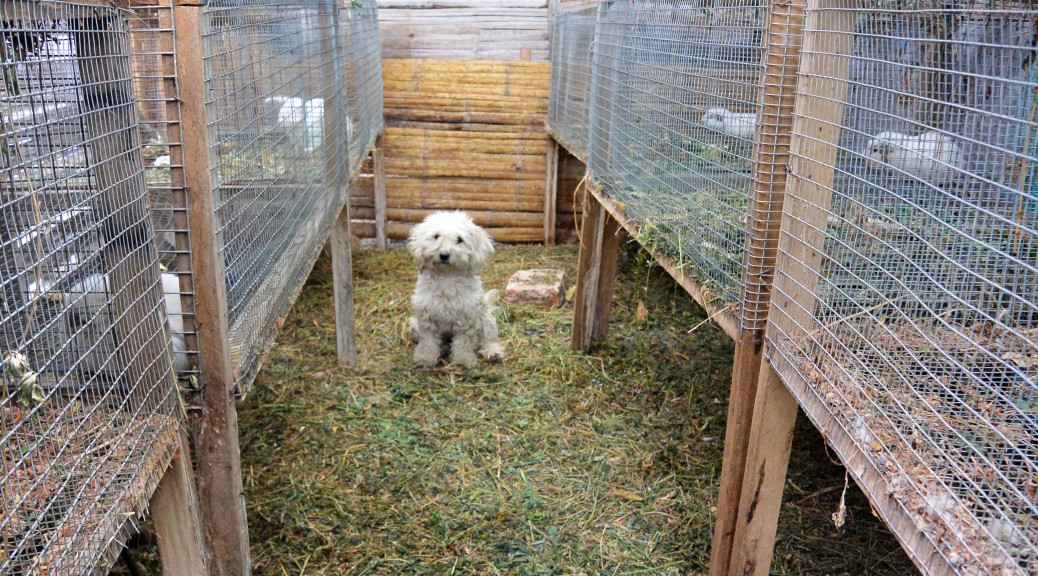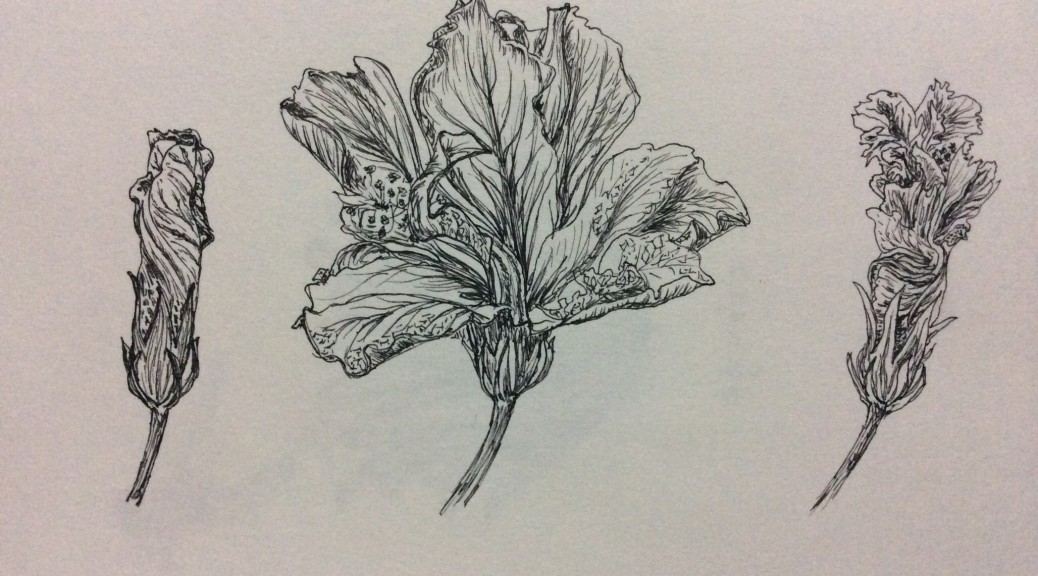Here is the tale of the cuy (guinea pig) roasting process that I took part in last weekend. The killing and cleaning of the cuy happened Saturday night, followed by a 1.5 hour roast the following morning. 5 cuy feed an extended family; aunts, uncles, and cousins showed up for a big feast Sunday afternoon.
[Reader discretion advised – story and photos go into detail.]
The story begins on Saturday evening with the 5 happy, munching cuy in our cuy shed, guarded by our dog Pelusa (translation: Fluff).
 Which were then collected into a sack, and proceeded to be very frightened.
Which were then collected into a sack, and proceeded to be very frightened.
My host mom, Alexandra, killed all five cuy by snapping their necks with her bare hands. I told her she was strong, that I could never be able to do that – she laughed and said she was from el campo (the farm).
She then took out one eyeball and let the cuy’s blood drain into a pan.
There was one old cuy that Alexandra had to kneel on to break its neck, and its muscles didn’t stop moving for a while afterward. I cried.
To pelar los cuyes (remove the fur), she dunked them in the boiling water and then used her hands to pull the fur off. “The heads are the hardest part,” she said.
Once all the cuy were de-furred, they were de-insided; heart, lungs, kidneys and testicles stayed, the gall bladder went to the dogs, and the intestines, stomach, etc. were discarded later (to the pigs?). Some of the cuy had not dropped their last turd in life; Alexandra had to push them out. [Sorry reader, I told you I was going to go into detail.]
My host father was playing with the food…
 Here are the cuy ready to be stuffed with some herbal seasoning…
Here are the cuy ready to be stuffed with some herbal seasoning…
Stuffed and left overnight for roasting on Sunday morning.
 Sunday morning (after a couple hours of transporting huge sacks of compost on our backs across the backfield (like backyard but it’s cropland…) to make our lettuce cropland more fertile, Alexandra and I brought out the cuy roaster and fired it up with a big blow torch and some coal. She “violated the cuy,” as my host father referred to it, securing them onto the roasting skewers.
Sunday morning (after a couple hours of transporting huge sacks of compost on our backs across the backfield (like backyard but it’s cropland…) to make our lettuce cropland more fertile, Alexandra and I brought out the cuy roaster and fired it up with a big blow torch and some coal. She “violated the cuy,” as my host father referred to it, securing them onto the roasting skewers.
And thus began the LONG roasting process; we spun the cuy for about an hour and a half.
We seasoned them with some sort of orange sauce (I love the home-made seasoning brush here).
Extended family members started arriving, and host cousins helped to roast.
The finished, crispy cuy were cut into portions and accompanied by papas (potatoes), arroz (rice), choclo (a breed of corn), salsa de maní (peanut sauce) and ají (delicious spicy pepper).
 And my abuelita started munching…
And my abuelita started munching…
 I had hardly eaten anything for 24 hours, and decided that if I was going to eat cuy, I was going to eat cuy. So I opted for la mitad (the middle slice of the cuy), and ate it – heart and all – con ganas (with enthusiasm/speed). For the next three days I was hardly able to eat anything, with a severe dolor de estómago (pain in my stomach).
I had hardly eaten anything for 24 hours, and decided that if I was going to eat cuy, I was going to eat cuy. So I opted for la mitad (the middle slice of the cuy), and ate it – heart and all – con ganas (with enthusiasm/speed). For the next three days I was hardly able to eat anything, with a severe dolor de estómago (pain in my stomach).
Although the meat here is about as local and grass-fed as you could get, I’ve decided that for the time being, at least, I really can’t stomach the idea of eating animals. So after a lifetime of omnivority, I’ve declared myself a vegetarian while living in Ecuador, where almost every meal includes some form of meat (good one, Georgia). At least my host family is understanding and on board.































